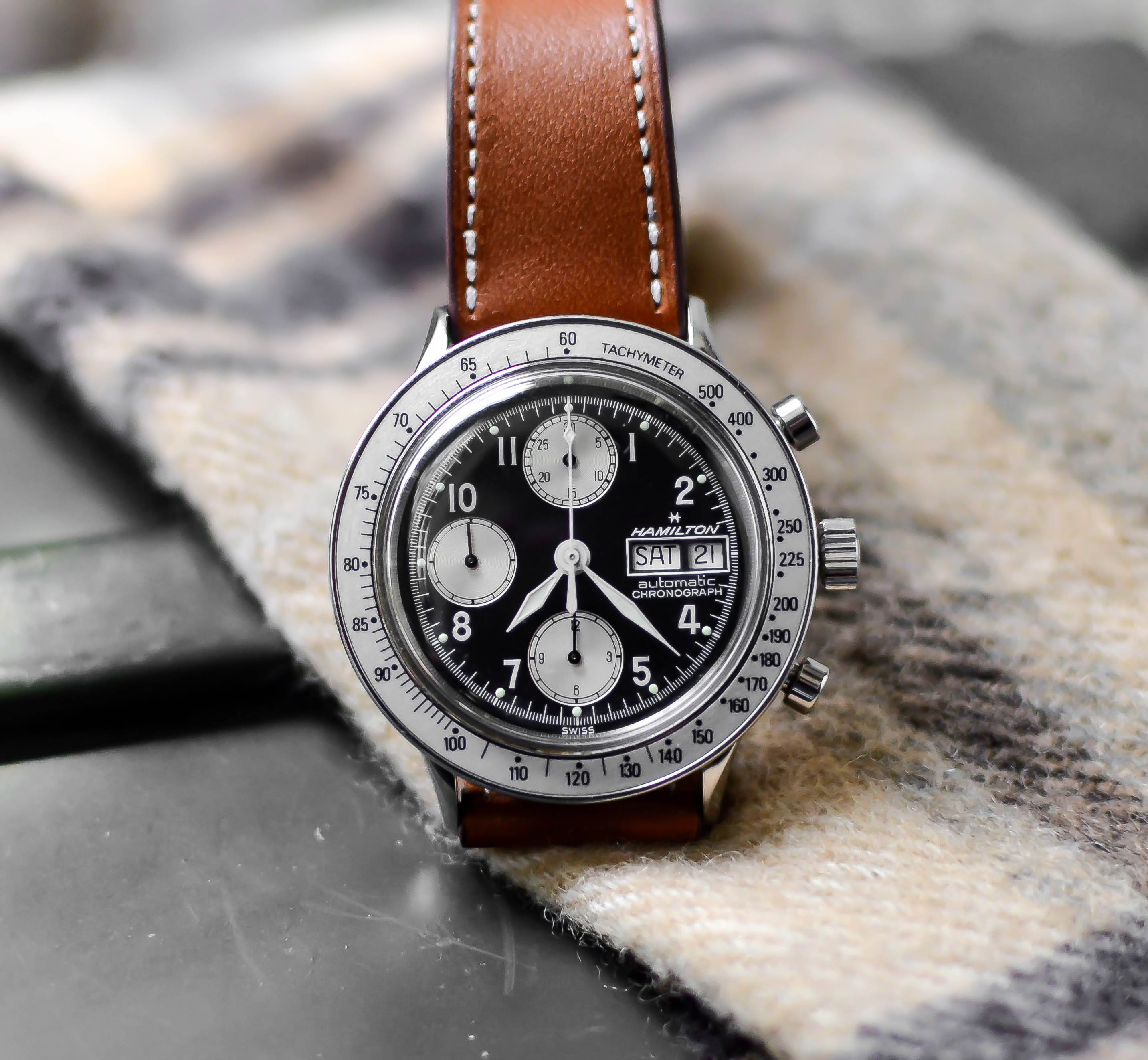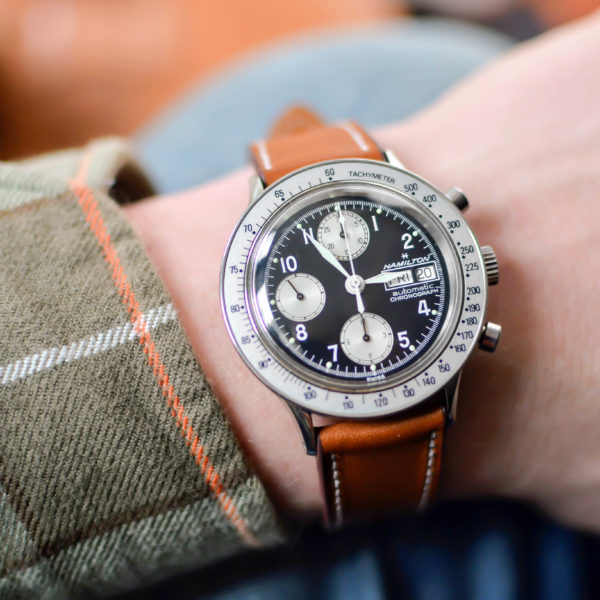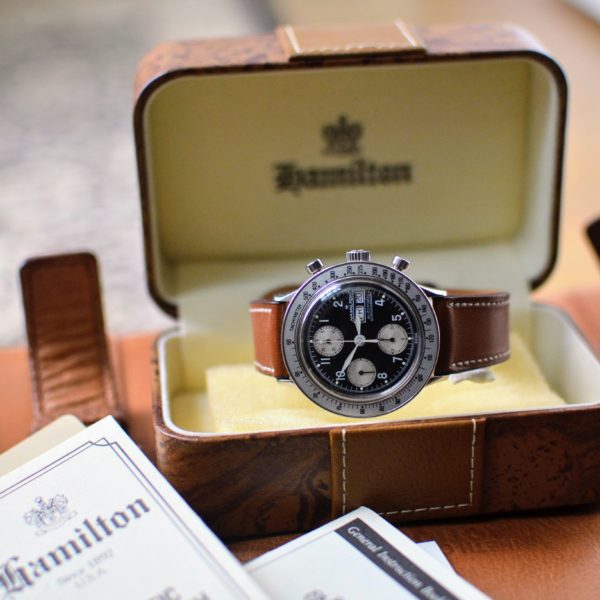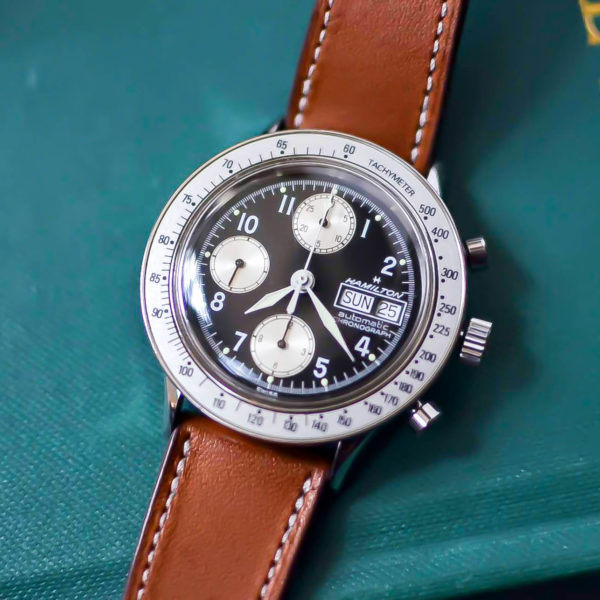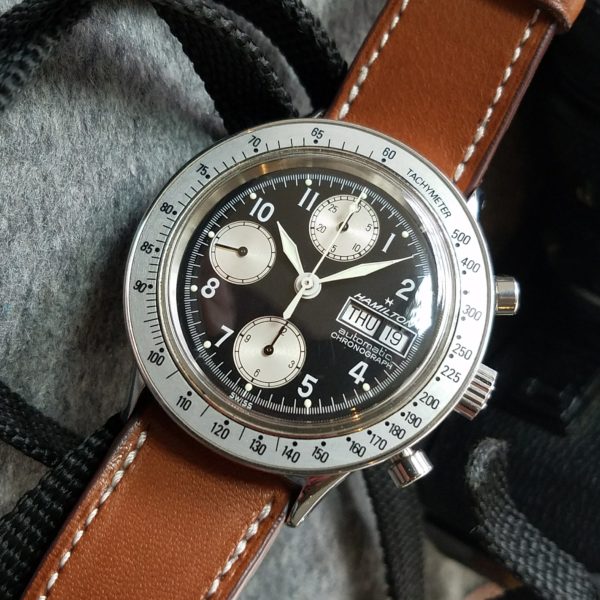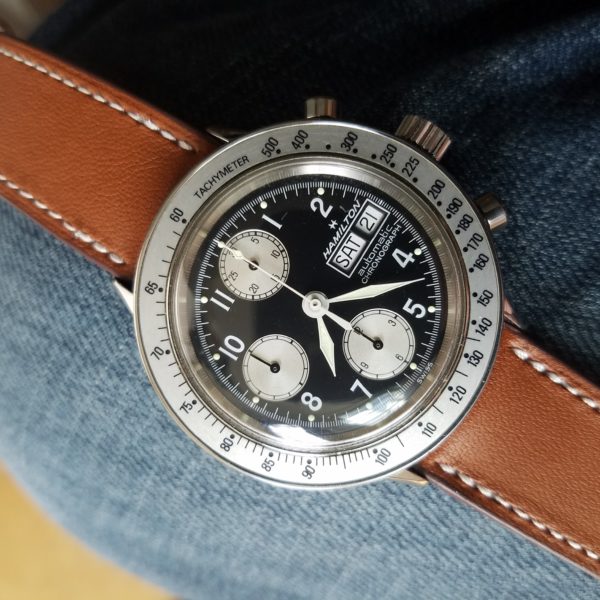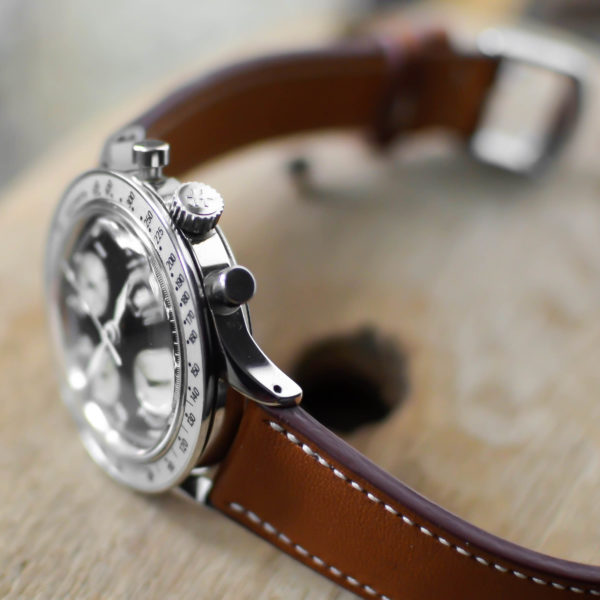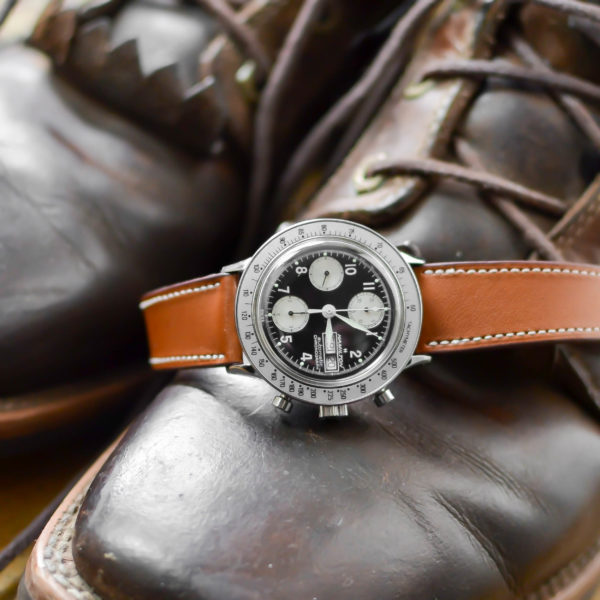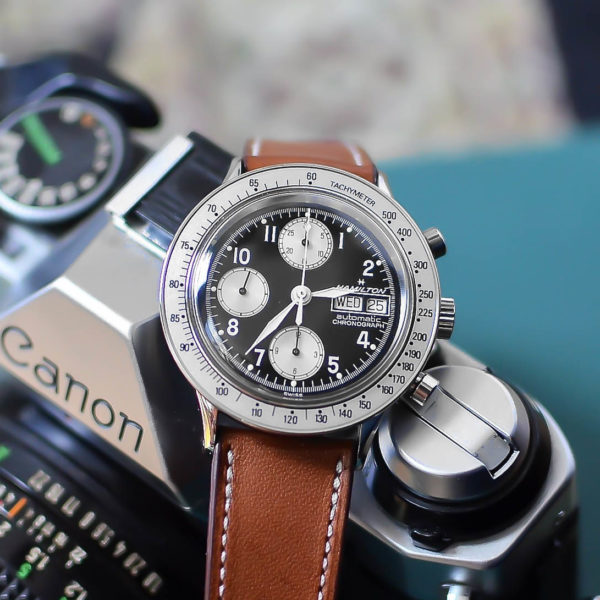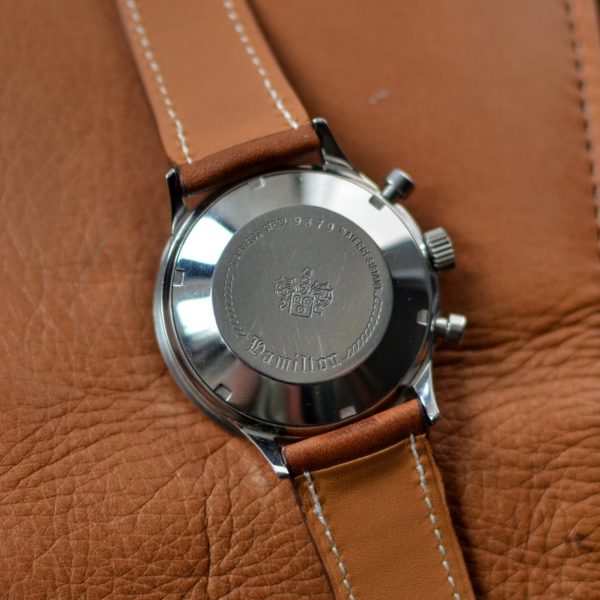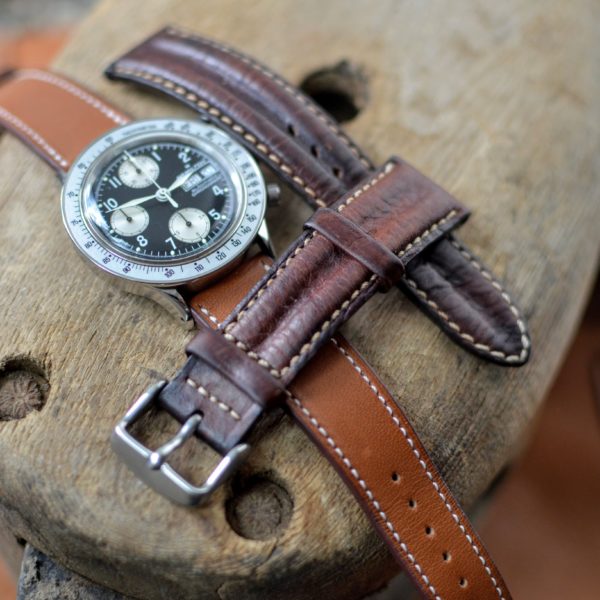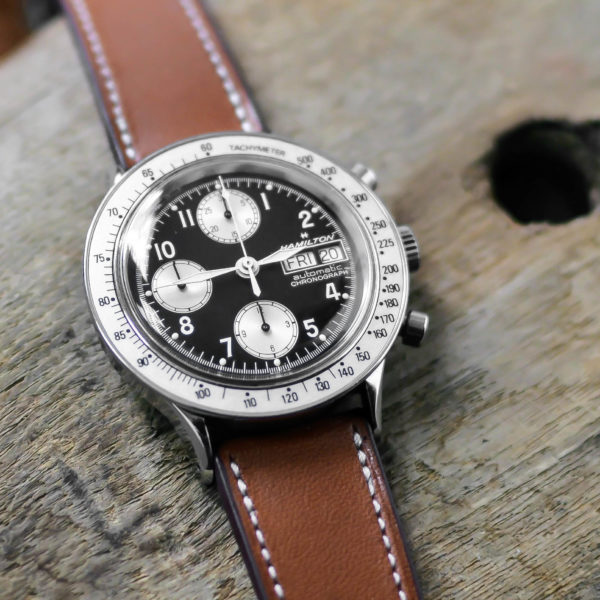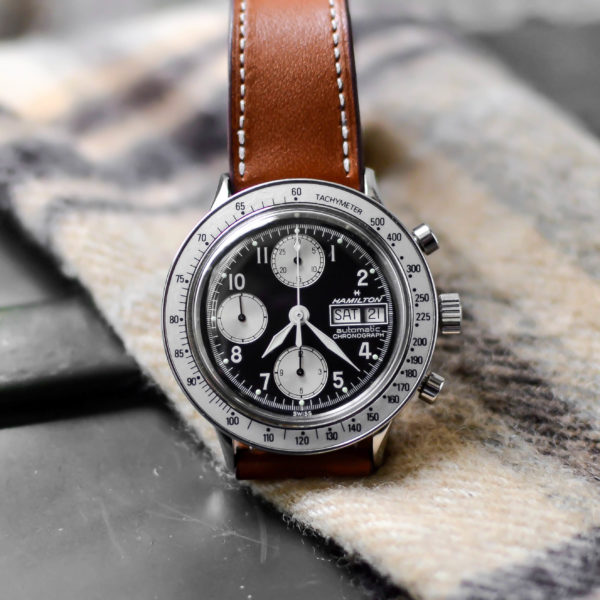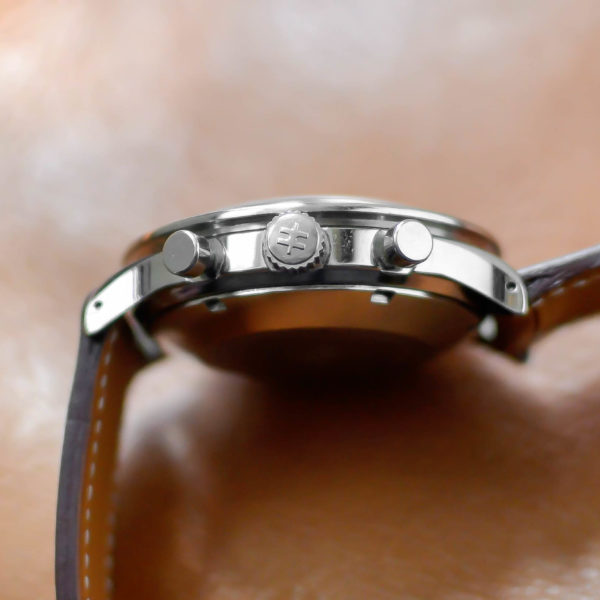Hamilton Chrono-Matic II (9379):
Why The Hell Aren’t These More Popular?
By: Damon Bailey
The nineties was an odd time for watch design. Tag Heuer was dominating the scene with plastic pieces that could have been mistaken for Happy Meal toys and ultimately the aftermarket attempts to commercialize on Swatch success gave us this guy. Then, for some odd reason, Hamilton felt the need to rebrand itself with gothic styling and choose to adopt a very European crown as its logo of choice. Suffice to say, the Quartz Crisis had taken a toll on the industry. And for a while there, it appeared as though our beloved American brand was very confused… enter the Hamilton Chrono-matic II, reference 9379.
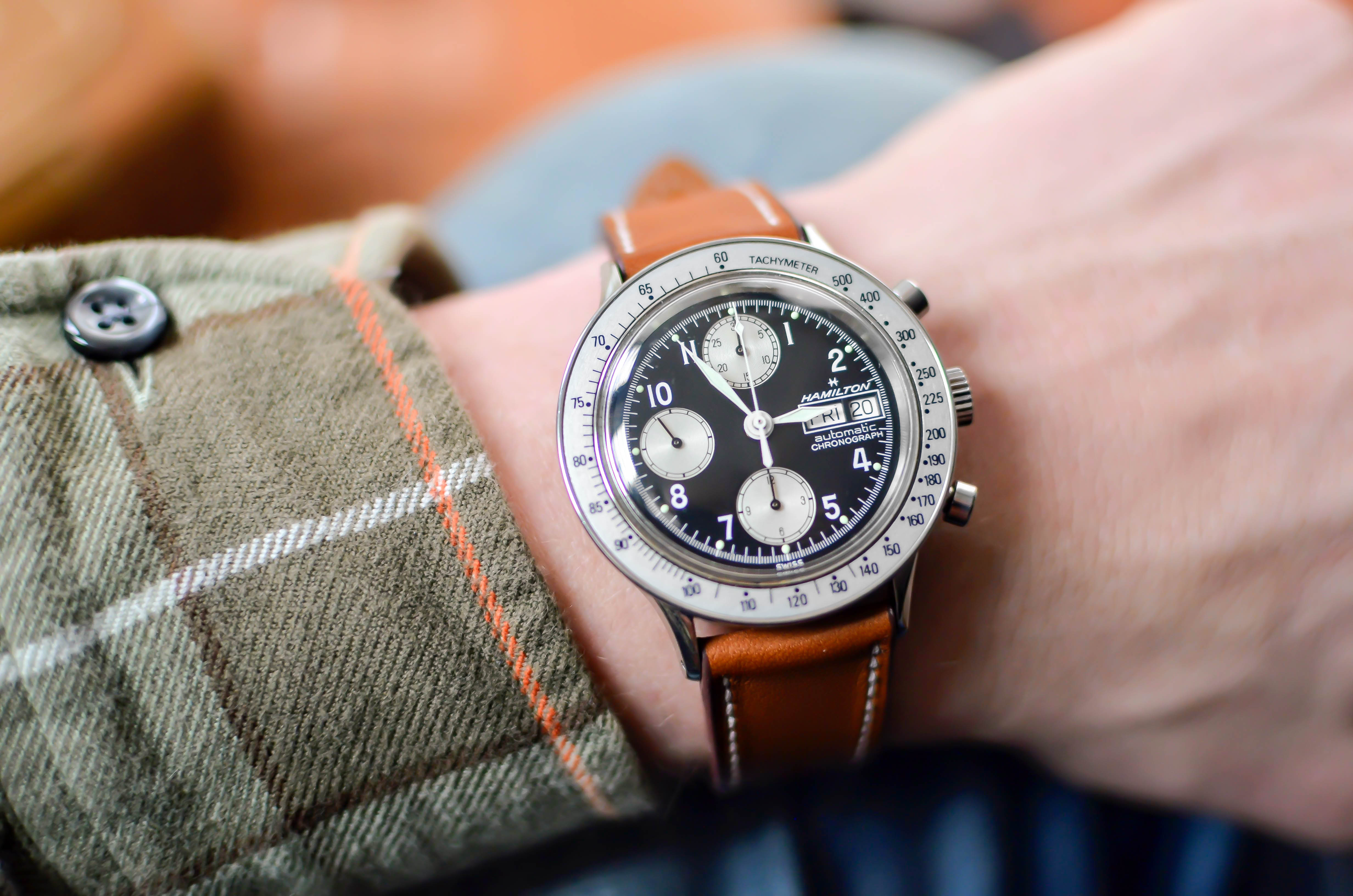
Why this particular Hamilton Chrono-matic II isn’t more popular among enthusiasts is beyond me. Near as I can figure it, it’s because it straddles that shadowed area of vintage watches that isn’t quite old enough to be “real vintage;” yet it hit the markets about a decade too soon for it to get the praise provided by the horology journalism of today. The best part though is that the Hamilton Chrono-matic II 9379 retains all the design cues of yesteryear without having jumped the shark on its updates.
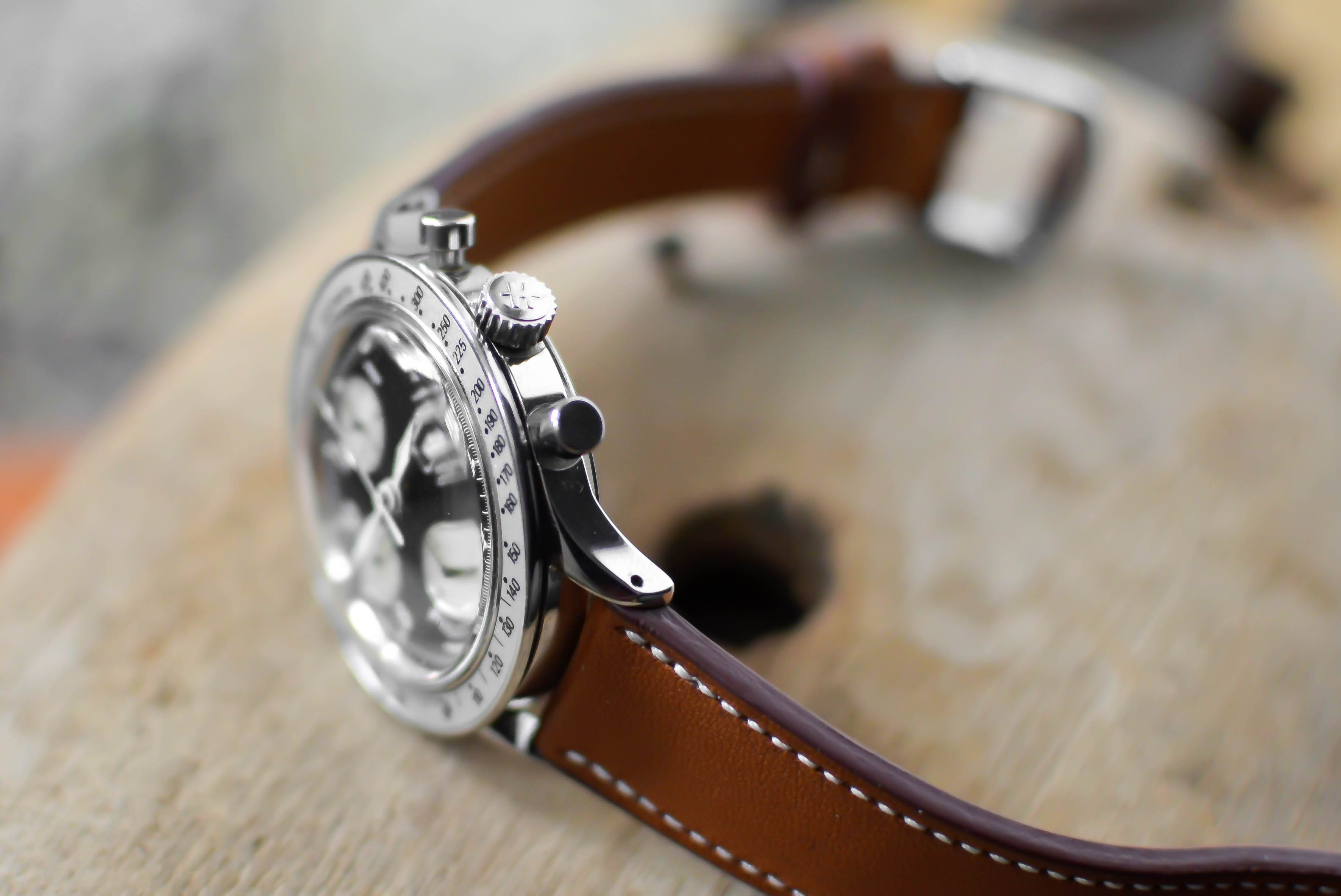
The Case
Including the brushed steel tachymeter bezel, the Chrono-matic’s polished case measures exactly 40mm across – 42.4mm including the crown and unobtrusive pushers. Lug to lug, you’re looking at 44mm with 20mm of strap width. And really, what could one complain about with these dimensions? For several of us, the modern interpretation of the original Hamilton Chrono-matic was too large at 42mm when the original was 36mm. 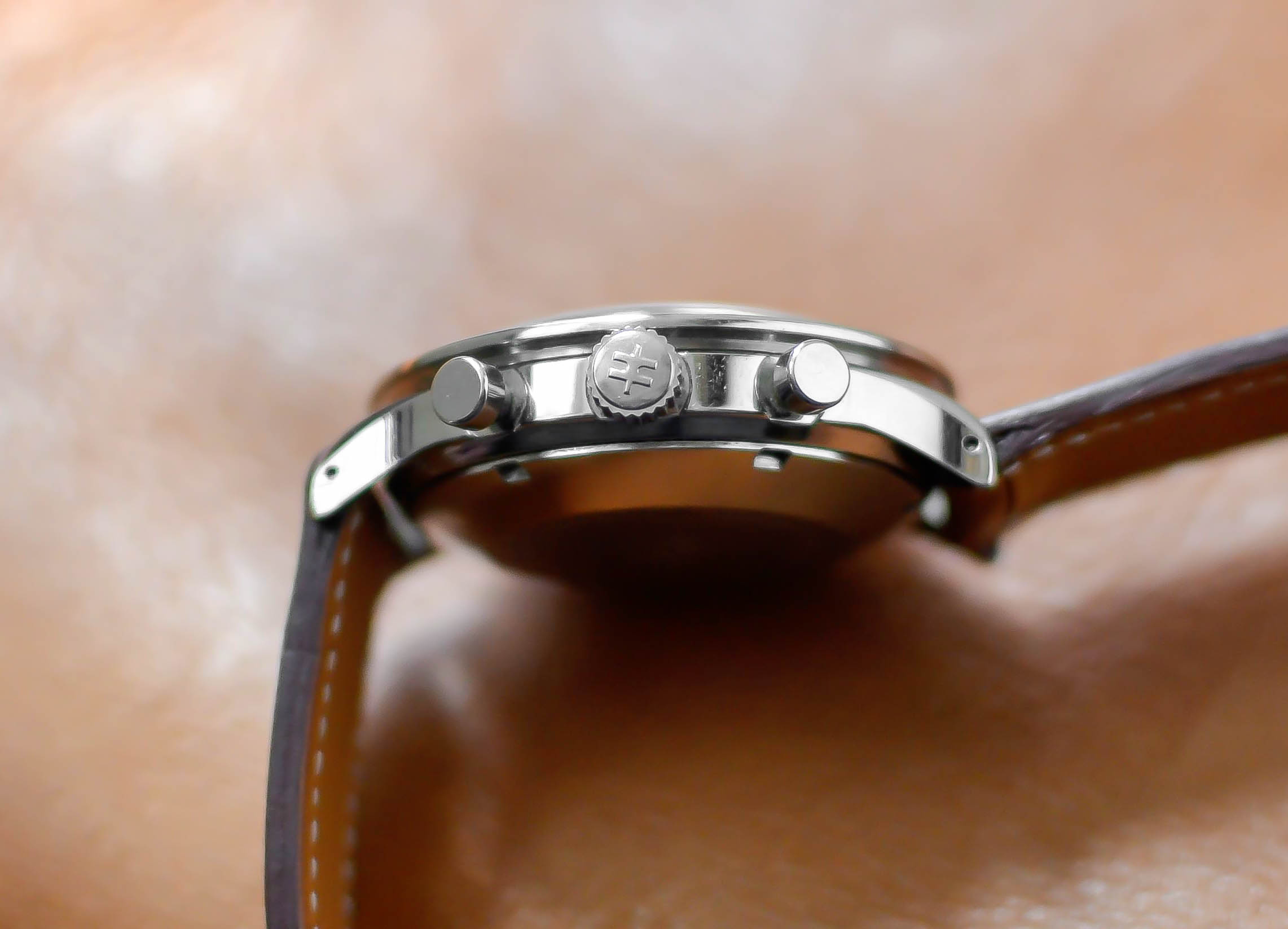
The best part? The crown is signed with Hamilton’s “Jet-age” logo reminiscent of their sixties designs. They choose to mark the screw-down case back with their gothic crest which leaves me a little perplexed, but the inconsistency is negligible. On a side note, it’s important to mention that there are a couple Chrono-matic 9379 variants floating around out there, one of which has a black bezel and some even have the gothic crest on the crown.
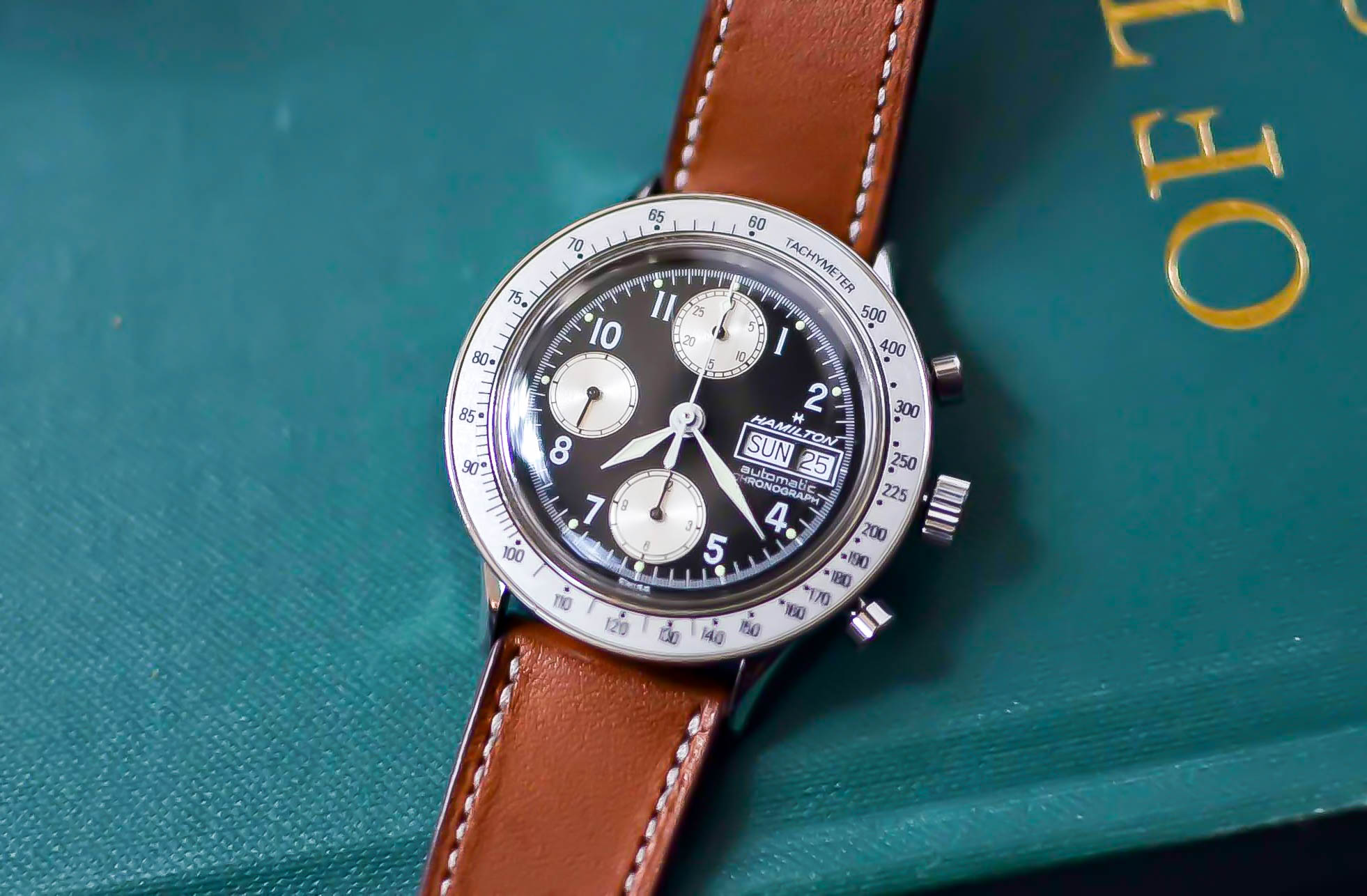
The Dial
Measuring 31.4mm across, the Chrono-matic II’s dial is a stunning reverse panda-style, triple-register with subdials in place of the 12, 9, and 6. In lieu of paint for contrast, Hamilton opted for textured “bulls eye-style” inner circles on the subdials to soften the glare of naked steel. Although only seen with a loupe, this is notable since a less classy shortcut would have been to forgo the sunburst effect in favor of something with a little less presence akin to their traditional field watches. Against flat black negative space, the Chrono-matic presents white, no-nonsense Arabic numerals that you would come to expect of Hamilton’s styling. Between them, very fine white indices mark the division of 1/5th second marks that I think probably serve the watch better for their aesthetics than they do for its stopwatch purposes. 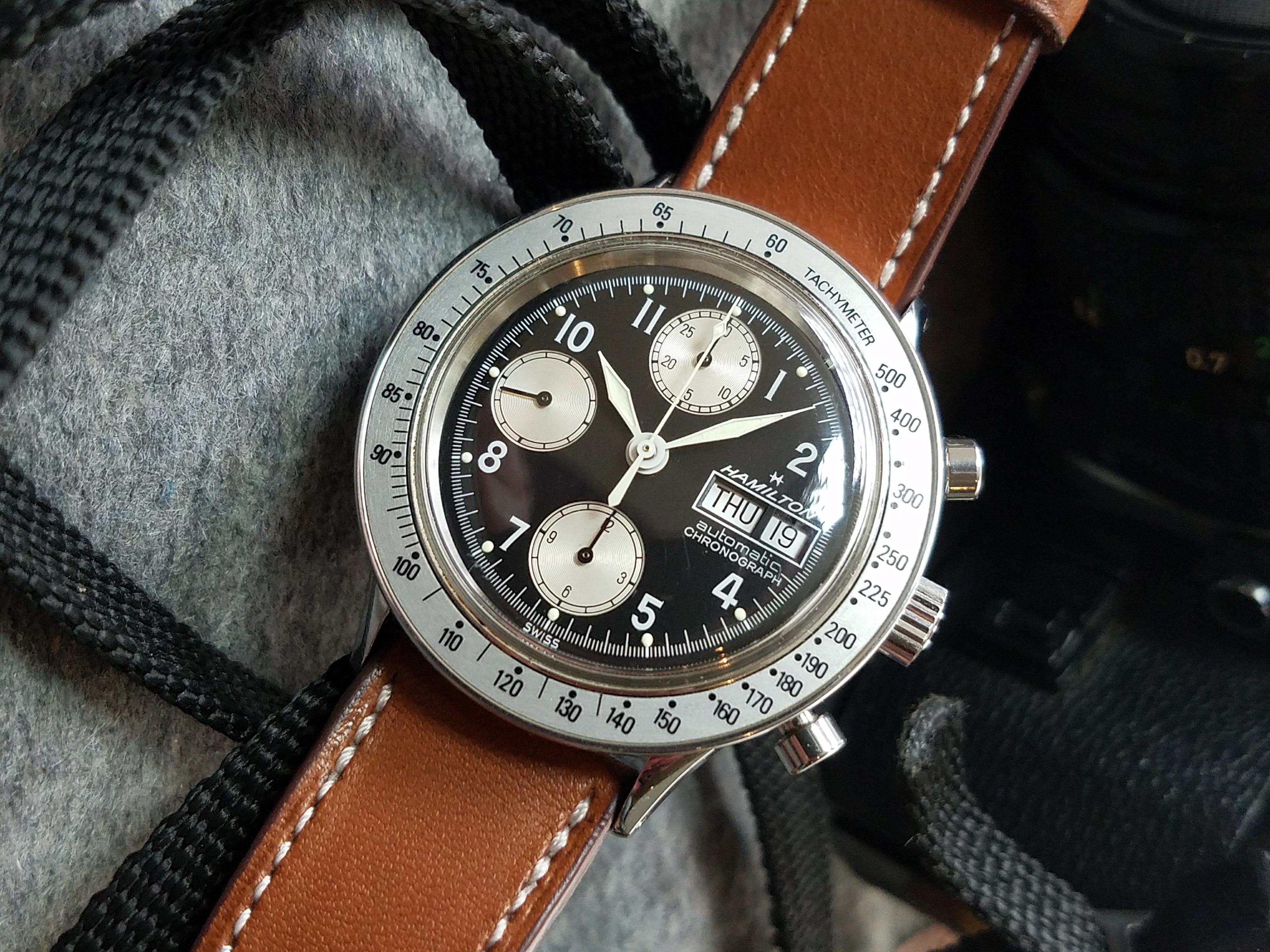
The hands are sword-style and white, filled with an aging luminova that glows for maybe ten seconds after a charge. Admittedly it’s a little tough to see at first glance when they cross the subdials. However, I think it’s because the majority of attention the watch receives is not me checking the time at all, as much as it is just staring at the thing. I expect that as the honeymoon phase passes, my eyes will be better adjusted to actually verifying the hour. For what it’s worth, I think overall the legibility will get better as the years pass and the lume turns to a custard patina.
And yes, there’s even an unapologetic date wheel including the week day at its right. Is it distracting? Not in the slightest. In fact, there’s so much balance to the overall piece between the contrast in bezel and dial combo that it’s refreshing to see something so deliberate built into its design, rather than it appearing to be an afterthought (I’m looking at you, Longines).
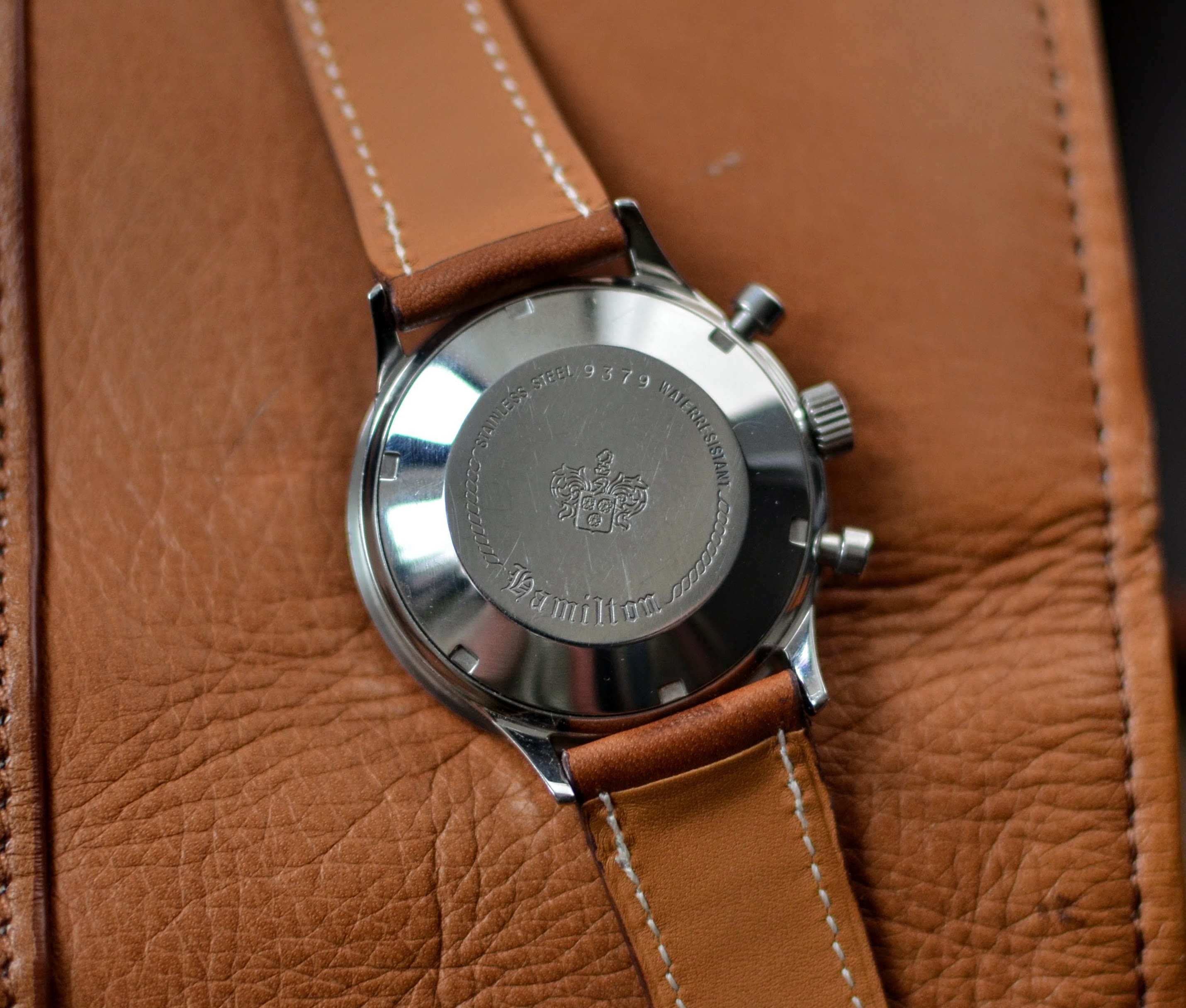
The Movement
The venerable Valjoux 7750. Dismissed by many as the chronograph “stock ETA movement,” let me offer an alternative view point that makes this particular engine so extremely important for when the watch came out. They were new back then. Not the tech, per say, but it’s welcomed introduction, mass integration, and provenance for saving much of the Swiss industry. Back when it was introduced in the 70s, the 7750 was widely dismissed by nitpicking fans whom opted for the column-wheel based movements for their refinery (Google the hoopla behind the El Primero and Omega 321). The Valjoux 7750 was considered crude by comparison, although easier for mass production. In turn, what it brought to the table instead was what many regarded as much greater reliability. Regardless of the dispute, it was quartz that stole the show for the next decade and our Valjoux 7750 was cast by the wayside.
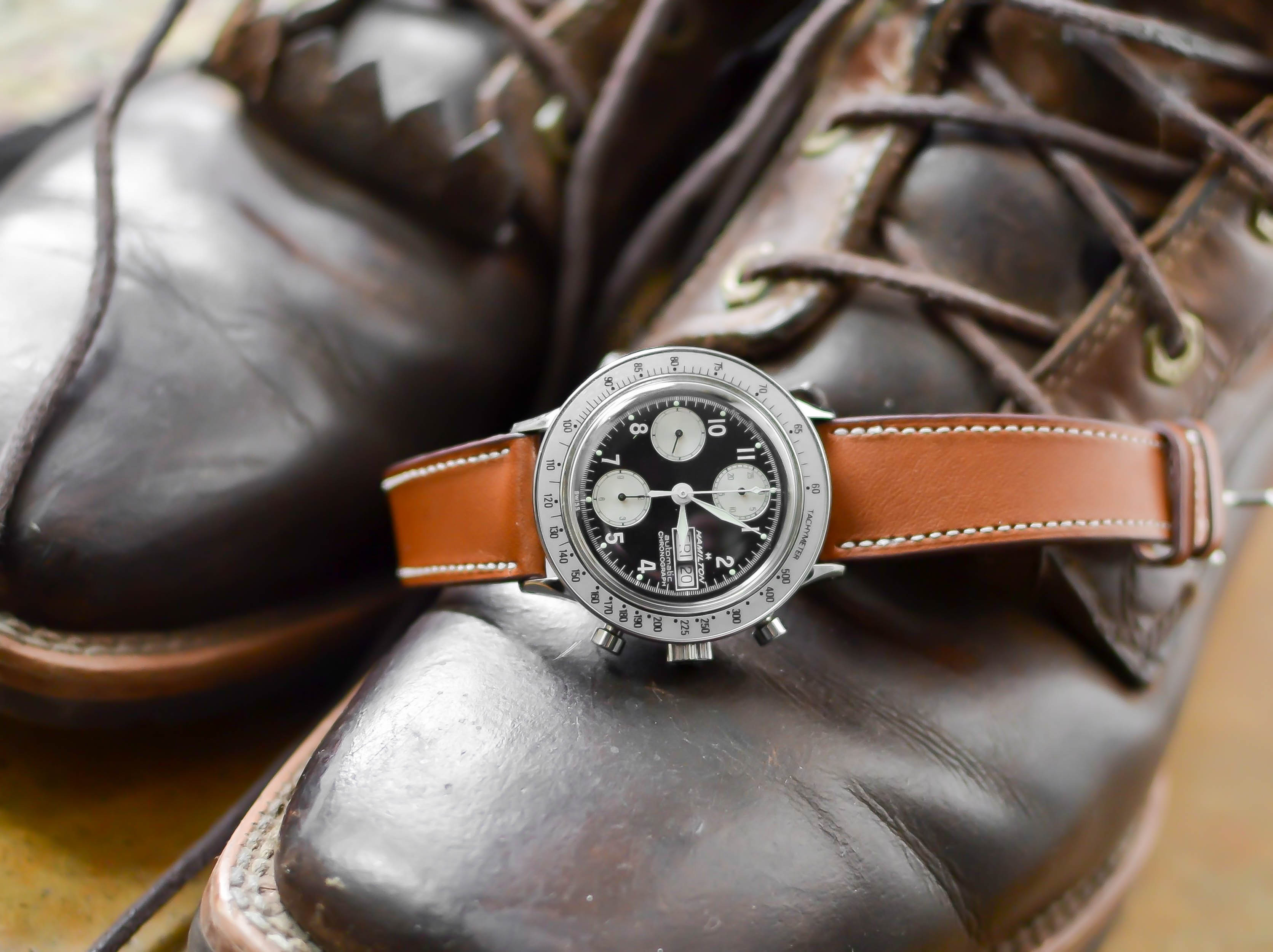 With the return of the late 80s, something incredible happened… the Swiss pushed back with their mechanicals. Only this time, they needed something affordable. Something more accessible for brands to build on, capable of being mass-produced, and with a toughness that would help reshape the reputation of mechanical watches altogether. By the 90s, there were two hundred thousand Valjoux 7750-based movements, effectively playing a major role in securing the future of the Swiss marketplace. And in the heat of it all was our Hamilton Chrono-matic II. To borrow a line from military watch aficionados, if “Hamilton was the watch that won us the war,” you could almost say, “the 7750 was the movement that saved the Swiss.” And also Swatch—all very debatable (I get it), but who doesn’t like a good underdog story?
With the return of the late 80s, something incredible happened… the Swiss pushed back with their mechanicals. Only this time, they needed something affordable. Something more accessible for brands to build on, capable of being mass-produced, and with a toughness that would help reshape the reputation of mechanical watches altogether. By the 90s, there were two hundred thousand Valjoux 7750-based movements, effectively playing a major role in securing the future of the Swiss marketplace. And in the heat of it all was our Hamilton Chrono-matic II. To borrow a line from military watch aficionados, if “Hamilton was the watch that won us the war,” you could almost say, “the 7750 was the movement that saved the Swiss.” And also Swatch—all very debatable (I get it), but who doesn’t like a good underdog story? 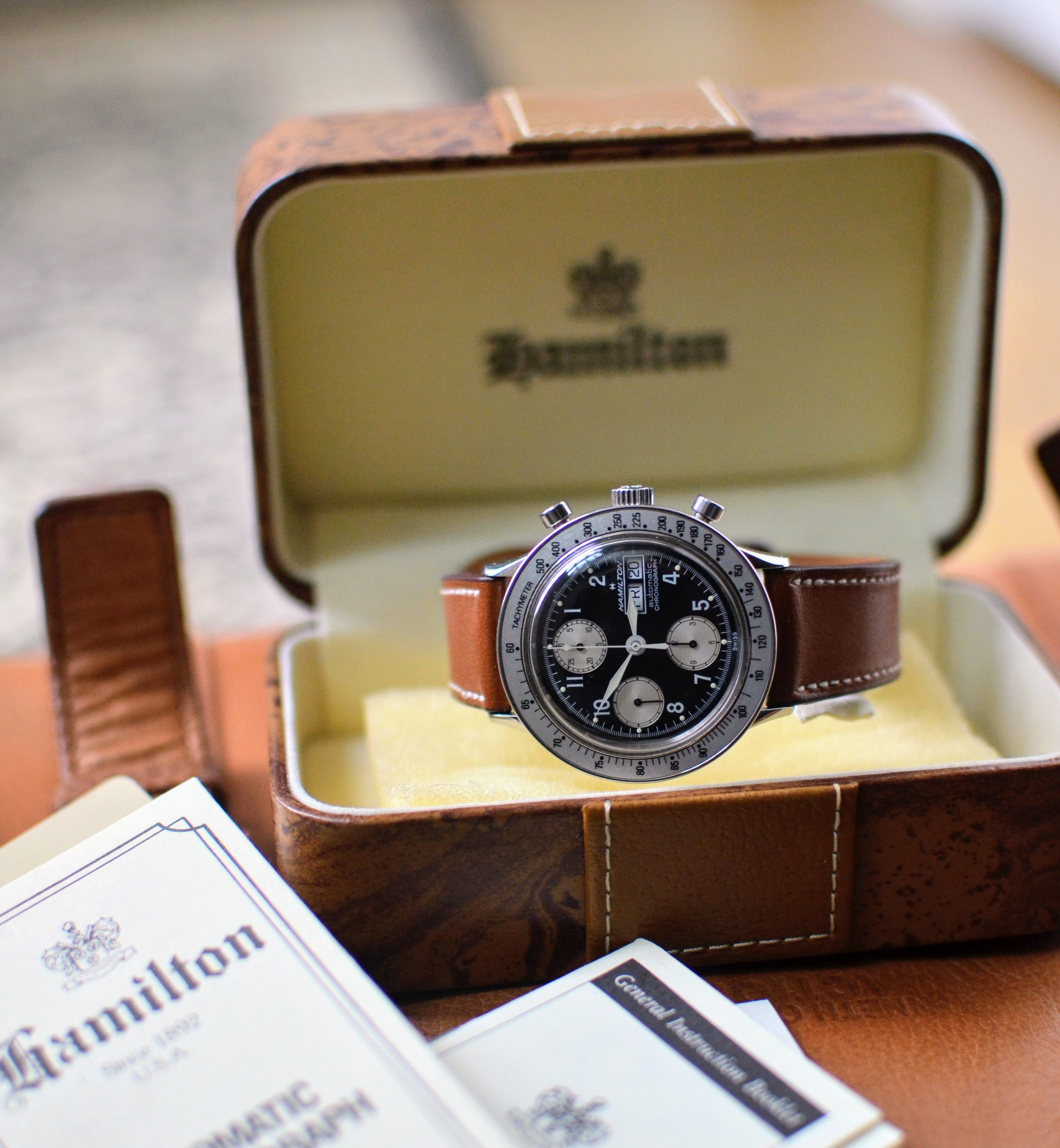
Overall thoughts
Admittedly I came across the Hamilton Chrono-matic II 9379 through a haphazard hunt of trying to locate its predecessor, the Chrono-matic (chronograph B) released in 1968 (you know, that panda dial dual register piece of retro-greatness often paired with some bohemian craft cocktail and brick wall backdrop on Instagram feeds). I figured, “Hey, this thing’s dapper, sporty, American-style in aesthetics, and totally heirloom-worthy.” As most of us know, that sort of authenticity comes at a price. What resulted was a series of futile online bidding wars, and total loss of sight for why I wanted something or why I even collect watches (Editor’s Note: I believe the technical term is “Horological Ennui”). I thought, “Okay, maybe I’ll just pivot towards getting another Seiko.” Then I came across what some guy in some forum referred to as, “the poor-man’s poor-man’s Heuer.” It was the Hamilton Chrono-matic II. And then I fell in love, and I continue to entertain myself with what I think Hamilton might have been chasing with this particular watch. My running theory is this:
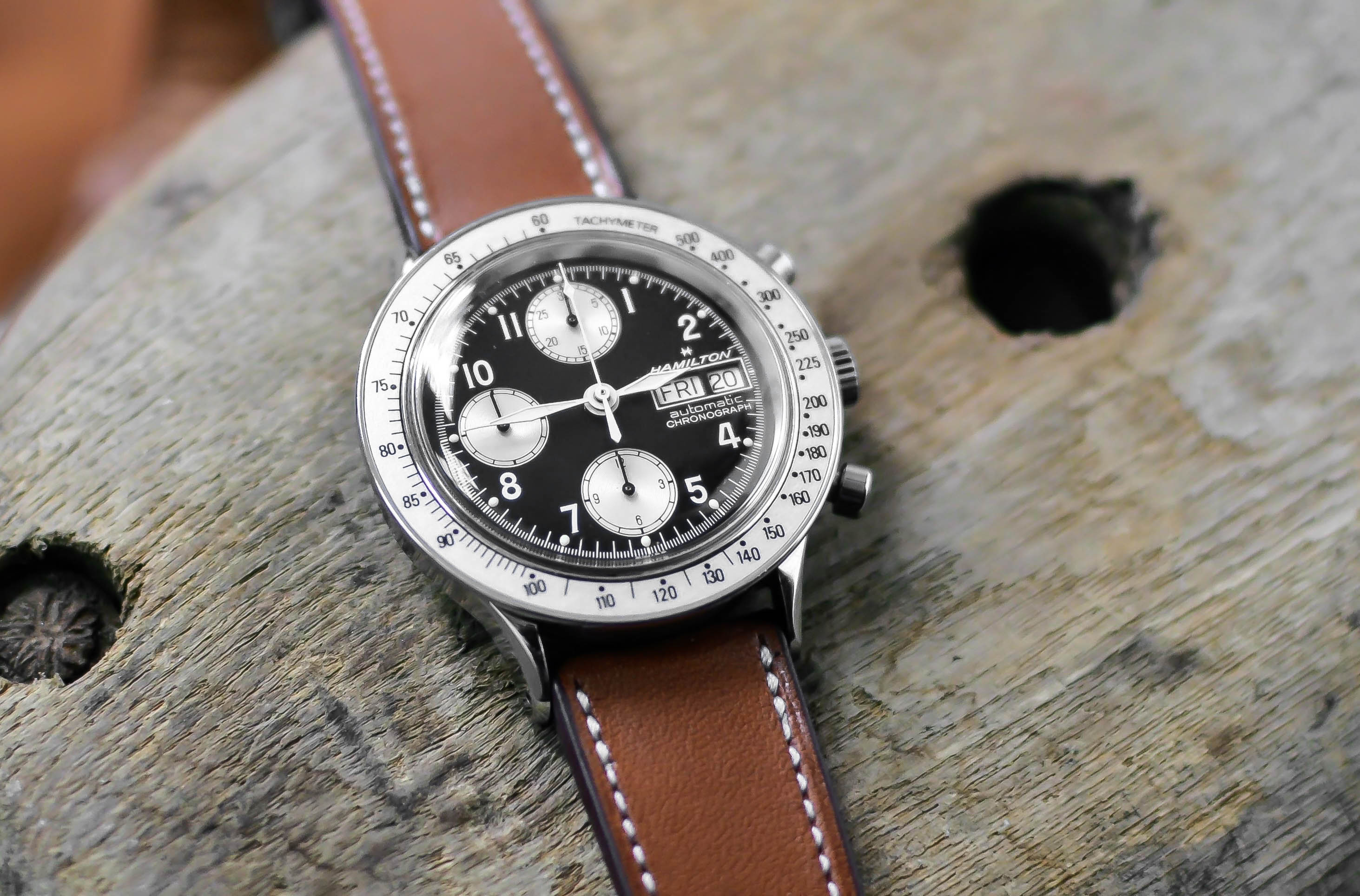
I think Hamilton, among its many competitors, were throwing things at the wall hoping they would stick amidst the wake of a very tumultuous time of technological innovation and fashion, until they made a desperate move and chose to look backward. Some marketing guy might have said, “Let’s make Hamilton look like this royal heritage prestige thing with gothic innuendos” and then some other dude said, “But wait, let’s keep it conservative and cool,” and then this last guy was all, “Well, whatever we do, you know it needs a tachymeter scale, right?” And they all high-fived. And then just like that, this melting pot of everything Euro-American, underdog tech with rugged design for innovation, and aesthetics of reto-chic homage appearances, all primordially souped their way toward an end state of total class into the Hamilton Chrono-matic II 9379.
And somehow, it worked.
Hamtilton Chrono-Matic II Specs (ref. 9379):
- 40mm wide
- 44mm lug to lug
- 20mm lug width
- Height 14.3mm
Alternate Hamilton 9379 Designs:
- 9446 LL Bean “Sportsman”
- 9988 “Poor-man’s Newman”

Damon is based out of the Bay Area, where he’s a black sheep among Apple Watch loyalists. Having served as a Combat Engineer with the USMC, he believes a true field watch’s success is measured by how closely it compares to a “G-Shock.” Nonsensically, a background in design has guided his preference toward higher craft, as he struggles to become the lifestyle his watch tastes more closely reflect.
